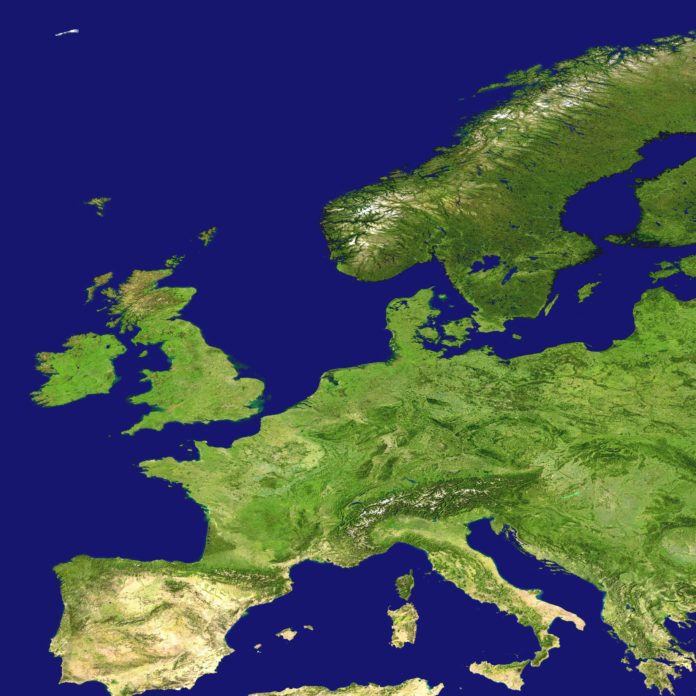This week marks the 15th week of the world’s battle with the outbreak of SARS-CoV-2. Europe remains very much at the centre of the pandemic.
“On the one hand we have reason to be optimistic, and on the other to be very concerned,” Dr Hans Henri P. Kluge, WHO Regional Director for Europe said in a press conference on Wednesday. Cases in Europe make up roughly half of all those in the world. Seven of the top ten countries most affected across the globe are in Europe – Spain, Italy, Germany, France, the United Kingdom, Turkey, and Switzerland.
Governments across Europe have responded to this disease by imposing different degrees of restriction on the public. There are some signs of a drop in the rate of new cases in some countries with community transmission. This follows the combination of public health and clinical interventions being implemented.
Spain
Spain now has more cases than Italy. However, it has been 15-20 days since restrictive measures were put in place in Spain. The growth in cases seems to have slowed, and the rate of new deaths is showing signs of a downward trend too. At the same conference, Dr Bruce Aylward pointed out that countries need to realise that the virus can overwhelm even the most robust health systems.
Dr Aylward is a Special Adviser to WHO’s Director-General, Dr Tedros Adhanom Ghebreyesus. Aylward had recently returned from Spain. There he led a mission to gain knowledge from the rapid outbreak of COVID-19 in that country. Aylward also advised both national and international responses. The mission included visits to Spain’s capital and three regions, as well as multiple healthcare facilities.
Throughout the briefing, Aylward spoke to the heroism of frontline workers in health systems. Healthcare workers in Spain – as in the countries across the world, and in Europe – are working tirelessly under difficult circumstances to treat patients. This means the government had to adapt its response too. It introduced strict lockdown measures. That helped slow the spread of the disease. The country’s health care system, therefore, gained some time to reorganise itself.
Don’t underestimate COVID-19
Aylward pointed to how explosively the COVID-19 can spread in a matter of days, as it did in Spain. “A dramatic increase in cases, such as this, presents many challenges to even the most advanced healthcare systems,” he said. COVID-19’s ability to spread rapidly shouldn’t be underestimated. So, the extraordinary measures applied in places like Spain are warranted. They help minimise the virus’ far-reaching impact.
Aylward says lockdowns are essential to slowing the virus. But they can’t halt its spread in its tracks. Countries should test as much as possible. They must also isolate confirmed COVID-19 + patients. Tracing and quarantining their contacts is essential too. Aylward adds that governments should see lockdowns as a window of opportunity. This time can be used to prepare for a gradual, controlled easing of restrictions.
After weeks of intense lockdown, it seems that in Italy, although the number of cases continues to rise, the rate of increase is slowing considerably. Ten days after the implementation of broad public health and social measures, cases began to decline in Germany too.
Good progress
Mortality rates and the average age of confirmed cases in Germany are lower than the average elsewhere. “This is linked to a range of factors – including population demography and widespread testing,” said Dr Kluge. He said further good progress is being observed in Austria, the Netherlands, and Switzerland. The Netherlands strategy was to implement an ‘intelligent’ lockdown, but the country doesn’t have widespread testing.
This is a graph tweeted by Top Animated Graphs yesterday:
Today 1417 patients related to the #coronavirus are on the intensive care. This is a slight increase with respect to yesterday, but still below the level of two days ago. #coronavirusNL #covid19NL #coronavirusNederland pic.twitter.com/AnfemUmaif
— TAG (@itsTAGofficial) April 9, 2020
It seems the peak of ICU admissions has been reached. According to an article in NOS, the number of CIVOD-19 patients in intensive care increased slightly yesterday. There were nine more people in intensive care than the day before. A total of 1417 beds were occupied. On Wednesday, for the first time, the number of COVID-19 ICU patients actually decreased. There were 16 few coronavirus-infected patients in intensive care than on Tuesday.
However, other countries are experiencing a rapid increase in cases or a fresh surge. “We’re concerned that Turkey has seen a dramatic increase in virus spread over the last week,” added Kluge. Cases in Ukraine, Belgium, and Norway are on the rise as well. And there is a fresh surge in Sweden. They had close on 9,150 confirmed cases yesterday. That is a considerable jump from 5,568 a week ago.
Sweden
And according to Forbes.com, the country’s daily coronavirus death rate has spiked over two days. “More than 100 Swedes have died per day for two days in a row, according to the Swedish Public Health Agency, bringing the total death count to 782,” reads the article. Sweden is an exception in Europe. It has relatively few restrictions in place.
People have been asked to stay and work from, home as much as possible. There is a ban on gatherings of more than 50 people. But restaurants, bars, and cafés remain open. Thy must just space out customers. Many schools and gyms are also still open. The major ski resorts have decided to close for the season.
Source: WHO











